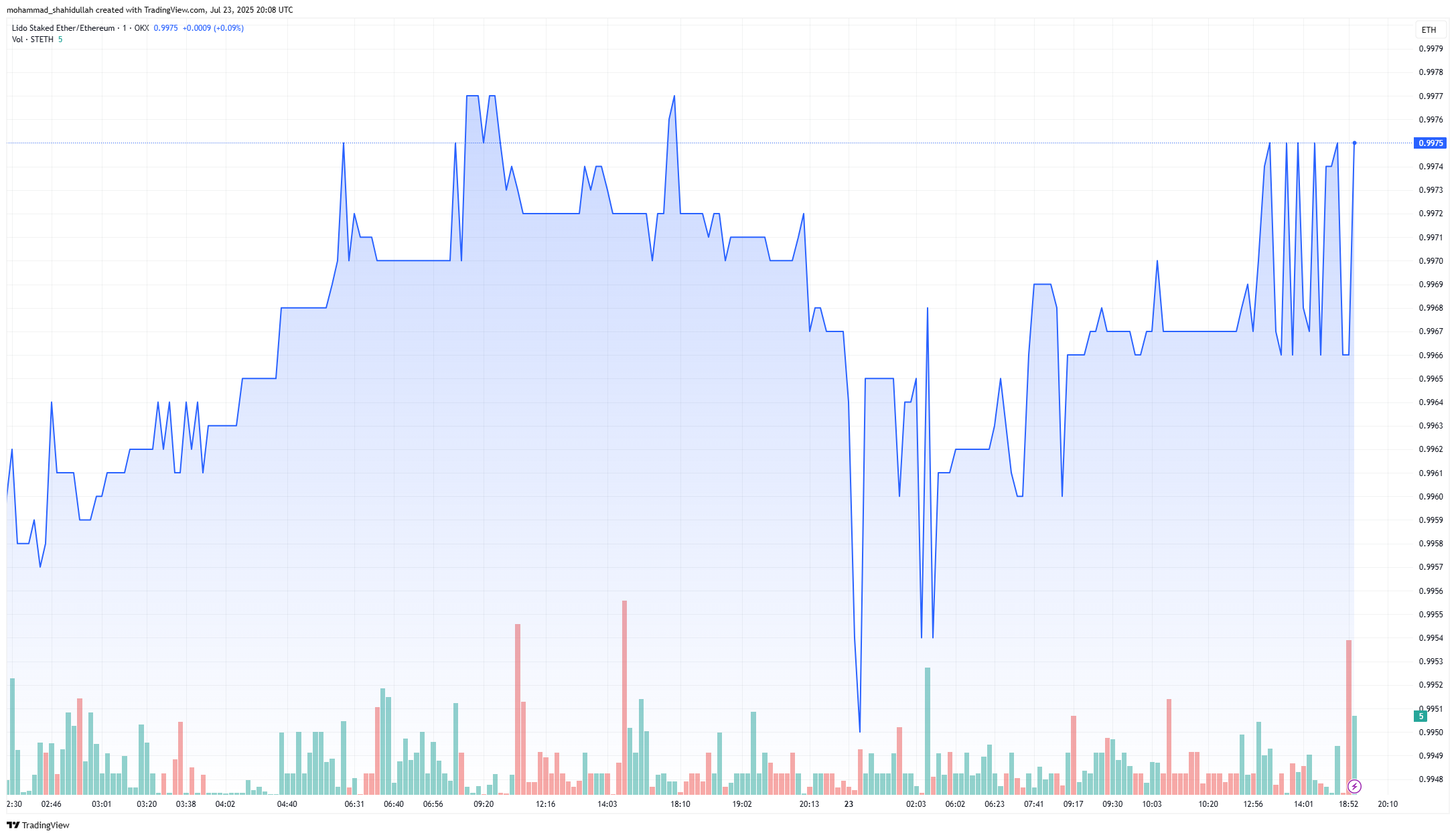A massive $1.7 billion worth of ETH has been pulled from Aave over the past week. Aave community members believe Tron founder Justin Sun withdrew at least $600 million, sparking a cascade of market reactions.
The large exit led to a sharp drop in ETH liquidity on Aave.
SponsoredEthereum Whale Movement Causes Sharp Drop in stETH
Continuous whale exit on Aave pushed utilization rates higher, which in turn caused ETH borrowing rates to spike.
As borrowing became expensive, DeFi users who relied on leveraged staking strategies began unwinding positions.
One of the hardest-hit strategies was the popular stETH/ETH leverage loop. Charts show that stETH depegged from ETH sharply before recovering.

Users typically deposit ETH, borrow against it, buy stETH, and repeat the cycle to earn staking yields. However, higher borrow rates and a weakening stETH peg made the strategy unprofitable.
As loopers began to exit, many rushed to redeem stETH for ETH. This created congestion in the staking withdrawal queue, which currently takes about 18 days to process.
SponsoredTo avoid the wait, some users offloaded stETH on secondary markets, causing a depeg of approximately 0.3%.
This slight depeg poses major risks for leveraged traders. A 0.3% price gap can mean a 3% loss on 10x leverage, forcing many to take losses or wait through illiquid positions.
The situation may worsen if interest continues to accrue, potentially triggering liquidations.
Price charts reflect the stress. ETH rose over 8% in the past week to $3,593 but has since pulled back from its peak.
Meanwhile, sETH—Synthetic ETH issued by Synthetix—jumped 30.5% over the week, signaling demand for alternatives amid volatility.
The event highlights systemic fragility in DeFi. A single large withdrawal disrupted lending rates, broke popular strategies, and exposed reliance on oracles and delayed redemption mechanisms.
With many stETH oracles still using redemption rates, not market rates, lenders remain stuck as the peg drifts.

